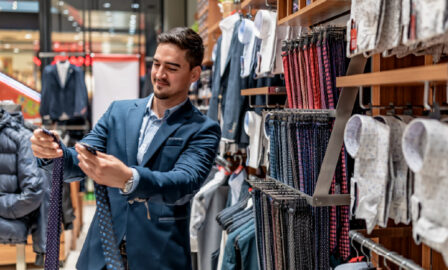Key Messages from NRF 2020
This week retailers, vendors, and thought leaders from around the country congregated in the Javits Center in New York City for the NRF 2020: Retail’s Big Show and Expo. When you bring together 40,000 of the best and brightest in the industry over the course of four jam-packed days, it’s impossible to see everything. We got a chance to hear from CEOs of some of the top companies in the industry, from Nordstrom and Starbucks to BJ’s Wholesale and Best Buy. We saw over 800 exhibitors on the expo floor, showing off cutting-edge technology that brings innovation to how retailers build experiences in their stores and online. Here are three key messages that we heard reverberating throughout the conference halls over the course of the week.
A Focus on People Initiatives at NRF 2020
Over the past few years, I’ve noticed that NRF has featured more topics that focus on the human side of retail, rather than the technology or business side. Which is not just a good thing, but a great thing. Topics at NRF 2020 ranged from attracting and retaining top talent, to building a culture that can successfully innovate, to embracing diversity and developing a culture of inclusion. Monday’s panel on ambition, purpose, and inclusion featured prominent female leaders from Cartier North America, Macy’s, and Rent the Runway discussing how they have focused on building an environment of inclusion where people can push each other to new heights. We’ve seen how diversity is not just a “nice to have” for retailers, but is something that should be intentional and a top priority as we move into 2020, and it’s wonderful to see it getting the attention that it deserves on such a prominent stage.
Artificial Intelligence and Continued Focus on Experience
Two topics that continue to be some of the top-repeaters at the conference are artificial intelligence (AI) and customer experience. What we saw at NRF 2020 was more of the intersection between these two. AI still has somewhat of a shroud of mystery around it – the term in and of itself doesn’t mean much – it’s something that derives its value by how it’s applied at a retailer. This recognition, that AI isn’t a “silver bullet”, seems to have made the rounds and now the industry is focusing on how AI can enable employees to be better, and to (again) focus on more “human things.”
Using AI to make employees lives better and their jobs easier, whether that be at a home office for a merchant, or in the store for an associate, is the focus. Perhaps the most intriguing new case that I heard came from Starbucks CEO Kevin Johnson. Starbucks is currently experimenting with using AI and Natural Language Processing (NLP) to capture a customer’s order, allowing the barista to look up from the register, smile, and make a connection with the customer rather than staring down at the register. These individual use cases could be the differentiator between a shopper being a one-time or recurring customer, and we will continue to see AI leveraged in this manner as retailers strive to make their brick and mortar locations a true “destination.”
Same Old Omnichannel, For a Reason
The amount of sessions focused on omnichannel has decreased over the past years, at least based on my review of the agenda. This movement makes sense, as it was considered a buzzword years ago and retailers have focused multiple years of technology and operations budgets to making things like ship from store and buy online, pick up in store a reality. However, even given all that, the sessions that are focused on omnichannel still seem to be some of the most highly attended. Why is that? Well, omnichannel is famously not easy. The impacts range from technology to operations and supply chain – and there’s hardly a retailer out there that is perfect at every element. Even beyond operations is the organizational focus of omnichannel – often implementing these new use cases will drive organizational change and force retailers to break down silos. Again, not easy. Which is probably why the session led by Adidas Director of Omnichannel Solutions, Peter Brook, was standing-room only with a line of about 200 people unable to get in. He spoke of the human and digital collaboration required to create value for customers in a timely manner, and how adidas has been able to build an omnichannel function that creates meaningful and effective experiences for its athletes.
Thank you to the National Retail Federation for another year of a magnificent event. If you have found this information valuable and would like to receive future insights about the retail industry, subscribe to our insights below or take a look at the services we provide. Also, you can view other NRF articles on the event website.



